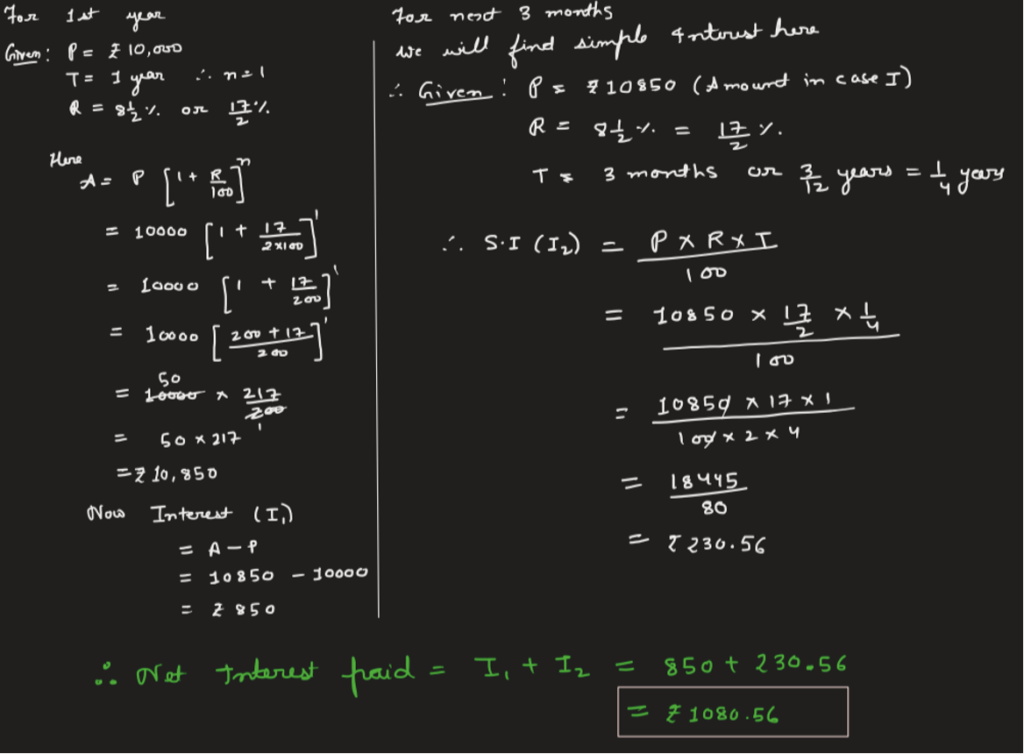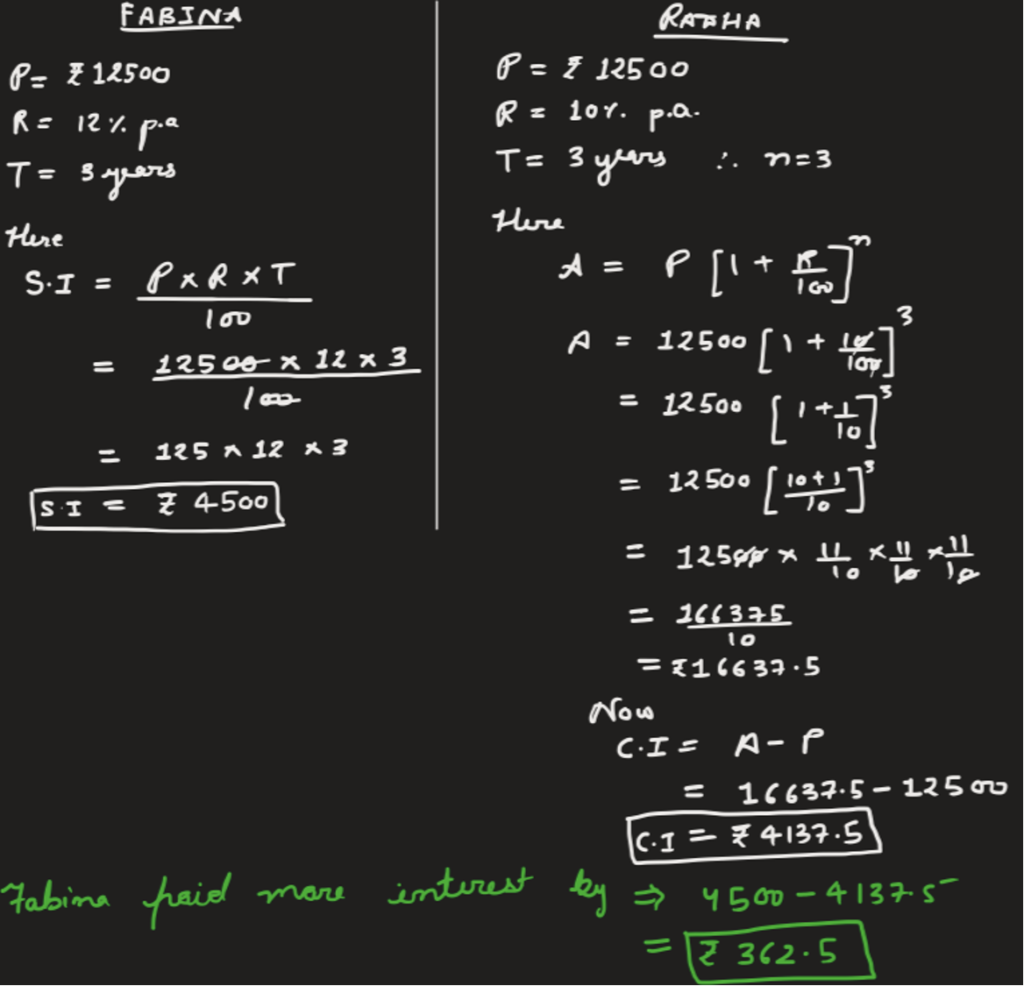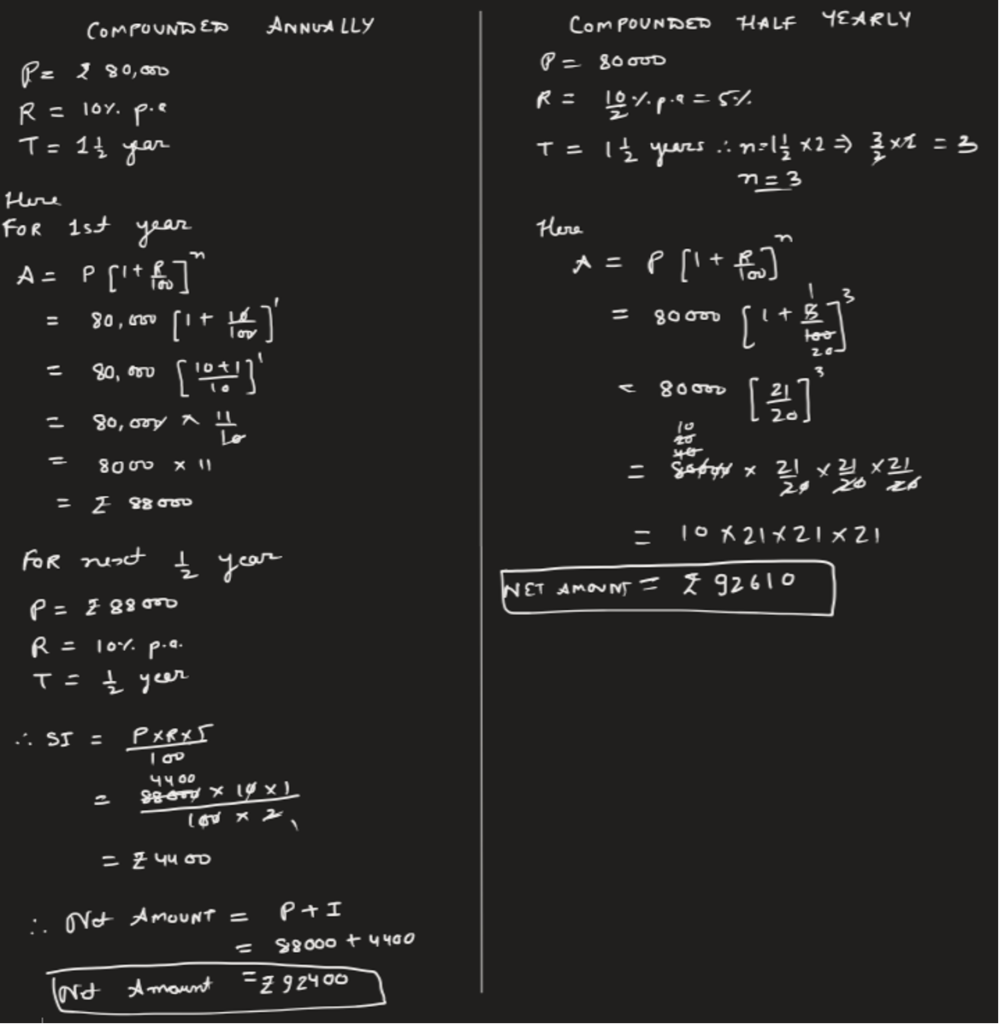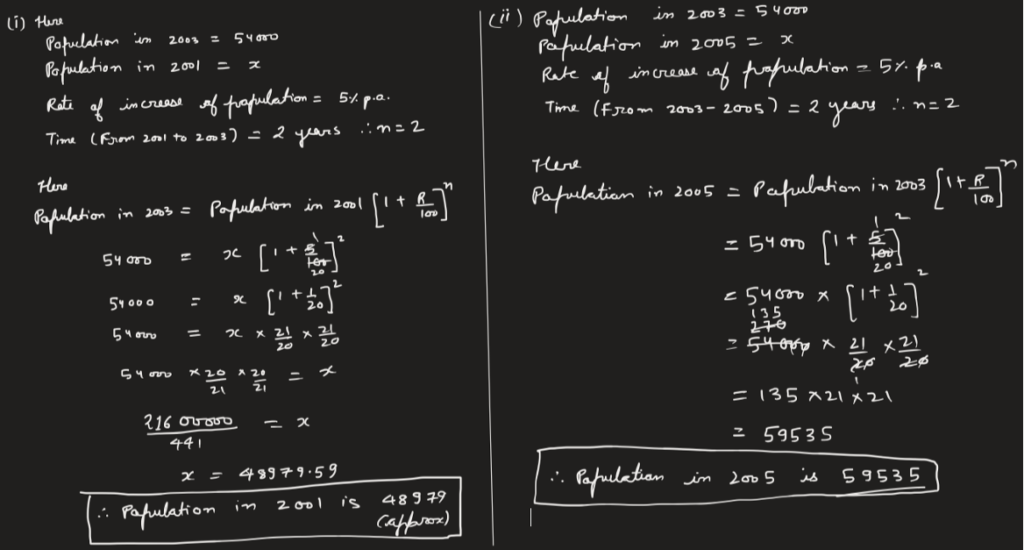SIMPLE AND COMPOUND INTEREST
WHAT IS INTEREST?
Extra money paid by the borrower or the banks/post offices on the money kept with them for a certain period of time.
SIMPLE INTEREST
You have already studied simple interest in you previous classes.
In simple interest, interest is paid only on the amount borrowed or lent… but it is different in case of compound interest… we will discuss it soon…
For now lets take an example of a problem based on simple interest.
1. A sum of Rs. 10,000 is borrowed at a rate of interest 15% per annum for 2 years. Find the simple interest on this sum and the amount to be paid at the end of 2 years.


COMPOUND INTEREST
In compound interest, borrower not only pay interest on amount borrowed, but also pays interests on the interests every year….
So for the first year simple interest and compound interest can be the same but after 1st year compound interest paid is always greater than the simple interest paid on a certain principal….


Now we are going to discuss it in details with the help of some problems…
Let’s start with a simple question and then we will go to the more complex ones…..
WHEN INTEREST IS COMPOUNDED ANNUALLY
2. Find CI on ₹ 12600 for 2 years at 10% per annum compounded annually.


WHEN INTEREST IS COMPOUNDED HALF YEARLY OR SEMI ANNUALLY
3. What amount is to be repaid on a loan of Rs. 12000 for 1 and half years at 10% per annum compounded half yearly


WHEN INTEREST IS COMPOUNDED ANNUALLY
BUT THE TIME IS GIVEN IN FRACTIONS
4. Find CI paid when a sum of ₹ 10,000 is invested for 1 year and 3 months at  % per annum compounded annually.
% per annum compounded annually.
In this case, we cannot take n = 1 year 3 months or 1 and 1/2 years or n = 1.25, because 1.25 in power will become difficult to solve..
So here we divide question in 2 parts
- First we will find the amount and interest after 1 year with the help of compound interest formula.
- And then we will find the interest on the amount found in first part with the help of simple formula…
Let’s see HOW?


Now let’s solve some more questions
5. Fabina borrows ₹ 12,500 at 12% per annum for 3 years at simple interest and Radha borrows the same amount for the same time period at 10% per annum, compounded annually. Who pays more interest and by how much?


6. Arif took a loan of Rs. 80,000 from a bank. If the rate of interest is 10% per annum, find the difference in amounts he would be paying after 1 and half years if the interest is compounded
(a) annually
(b) half yearly


QUESTIONS BASED ON
THE APPLICATION OF COMPOUND INTEREST
7. The population of a place increased to 54,000 in 2003 at a rate of 5% per annum find the population in 2001. what would be its population in 2005?


8. In a Laboratory, the count of bacteria in a certain experiment was increasing at the rate of 2.5% per hour. Find the bacteria at the end of 2 hours if the count was initially 5, 06,000.


I hope this revision must have helped you in understanding the concepts of the chapter….
STUDY SMART NOT HARD
ALL THE BEST 🙂

